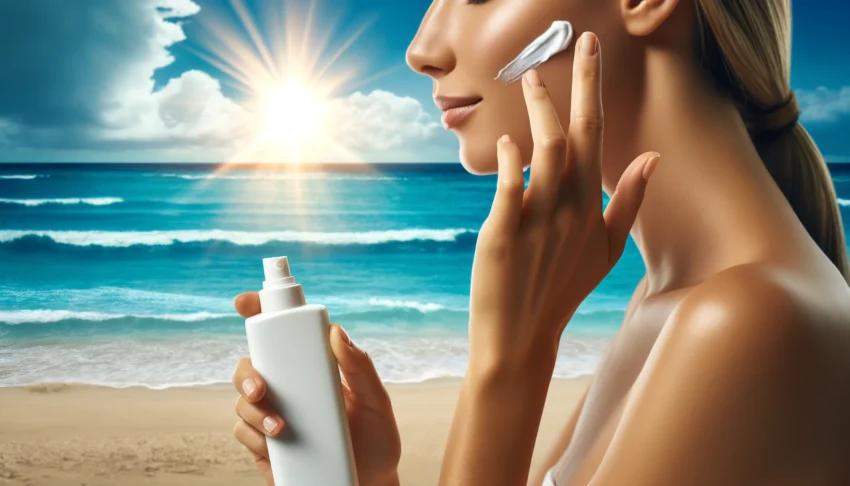As we step into the sunny days of summer or even venture out on a bright winter morning, one essential item often overlooked is sunscreen. While it might seem like an extra step in our daily routine, the importance of sunscreen cannot be overstated. This article will delve into why sunscreen is crucial, the long-term harm of unprotected sun exposure, the concerns around sunscreen toxicity, and how to make informed choices to balance safety and protection.
Understanding Sun Exposure
Sunlight, while essential for life and a natural source of Vitamin D, can be a double-edged sword. The sun emits ultraviolet (UV) radiation, which can cause significant harm to our skin. There are two main types of UV radiation that affect our skin: UVA and UVB.
- UVA Rays: These penetrate deep into the skin and are primarily responsible for aging. They can penetrate through glass and are present with relatively equal intensity during all daylight hours throughout the year.
- UVB Rays: These are primarily responsible for sunburn and are more intense during certain times of the day and year. They can be blocked by windows.
Both types of UV radiation contribute to skin damage and increase the risk of skin cancer.
The Long-Term Harm of Unprotected Sun Exposure
Skin Aging
One of the most noticeable effects of unprotected sun exposure is premature aging of the skin, also known as photoaging. Photoaging is characterized by:
- Wrinkles and Fine Lines: UV radiation breaks down collagen and elastin in the skin, leading to a loss of skin elasticity and the formation of wrinkles and fine lines.
- Hyperpigmentation and Sunspots: Prolonged exposure to the sun can cause an uneven skin tone, dark spots, and pigmentation. These sunspots, also known as liver spots, can become permanent.
- Loss of Skin Firmness: Over time, repeated sun exposure can cause the skin to lose its firmness and sag, particularly in areas like the face, neck, and hands.
Skin Cancer
The most serious consequence of unprotected sun exposure is skin cancer. There are three main types of skin cancer:
- Basal Cell Carcinoma (BCC): The most common and least dangerous form, often appearing as a small, shiny bump or nodule on the skin.
- Squamous Cell Carcinoma (SCC): This type can be more aggressive than BCC and may appear as a red, scaly patch or sore that heals and reopens.
- Melanoma: The most dangerous form of skin cancer, which can spread to other parts of the body if not caught early. Melanoma often appears as a new, unusual growth or a change in an existing mole.
According to the American Cancer Society, about 5.4 million basal and squamous cell skin cancers are diagnosed each year in the United States alone, and melanoma accounts for more than 100,000 new cases annually.
Other Skin Damage
Besides aging and cancer, UV exposure can lead to other skin issues such as:
- Actinic Keratosis: Rough, scaly patches on the skin that can develop into cancer.
- Eye Damage: Prolonged UV exposure can damage the eyes, leading to conditions like cataracts and macular degeneration.
Sunscreen: Balancing Protection and Safety
While the benefits of sunscreen in protecting against UV radiation are well-documented, there are concerns about the potential toxicity of certain sunscreen ingredients. Understanding these concerns and how to make safer choices is crucial for maintaining both skin health and overall well-being.
Concerns About Sunscreen Toxicity
Some chemical ingredients in sunscreens have raised health and environmental concerns:
- Oxybenzone and Octinoxate: These ingredients have been shown to penetrate the skin and enter the bloodstream. They have been linked to hormone disruption and allergic reactions. Additionally, they are harmful to coral reefs and marine life.
- Retinyl Palmitate: A form of Vitamin A that may speed up the development of skin tumors and lesions when exposed to sunlight.
- Parabens and Fragrances: Common in many personal care products, these can cause allergic reactions and may have hormone-disrupting effects.
Physical (Mineral) Sunscreens
An alternative to chemical sunscreens is physical sunscreens, which use mineral-based ingredients like zinc oxide and titanium dioxide to reflect UV radiation away from the skin. These ingredients are generally considered safer for both humans and the environment.
Balancing Harmfulness and Importance
When choosing a sunscreen, it’s important to weigh the benefits of UV protection against potential risks. Here are some guidelines:
- Opt for Mineral Sunscreens: These are less likely to cause skin irritation and are better for the environment.
- Check for Broad-Spectrum Protection: Ensure the sunscreen protects against both UVA and UVB rays.
- Use SPF 30 or Higher: Higher SPF numbers offer more protection, but no sunscreen can block 100% of UV rays.
- Read Labels Carefully: Avoid sunscreens with harmful chemicals like oxybenzone, octinoxate, and retinyl palmitate.
- Reapply Regularly: Reapply every two hours, or more often if swimming or sweating.
How to Incorporate Sunscreen into Daily Life
Daily Routine
Make sunscreen a part of your daily skincare routine, even on cloudy days or when staying indoors, as UVA rays can penetrate windows.
Additional Protective Measures
Use sunglasses, hats, and protective clothing to further shield your skin from the sun.
Educating Yourself
Stay informed about the latest research on sunscreen ingredients and their safety. Resources like the Environmental Working Group (EWG) provide annual sunscreen guides that rate the safety and efficacy of various products.
Conclusion
Sunscreen is an essential part of skin health, offering protection against the immediate and long-term effects of UV radiation. While there are concerns about the toxicity of certain sunscreen ingredients, choosing the right products and using them correctly can help you balance safety and protection. By incorporating sunscreen into your daily routine and staying informed about the best options available, you can prevent premature aging, reduce the risk of skin cancer, and maintain healthier, more youthful skin. Don’t wait for the next sunny day; start protecting your skin today for a healthier tomorrow.

